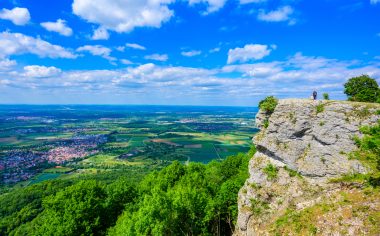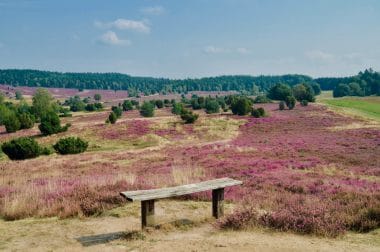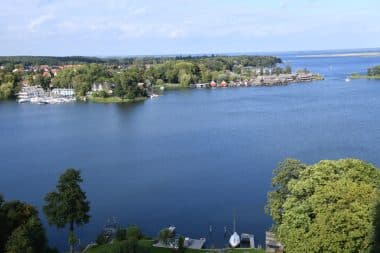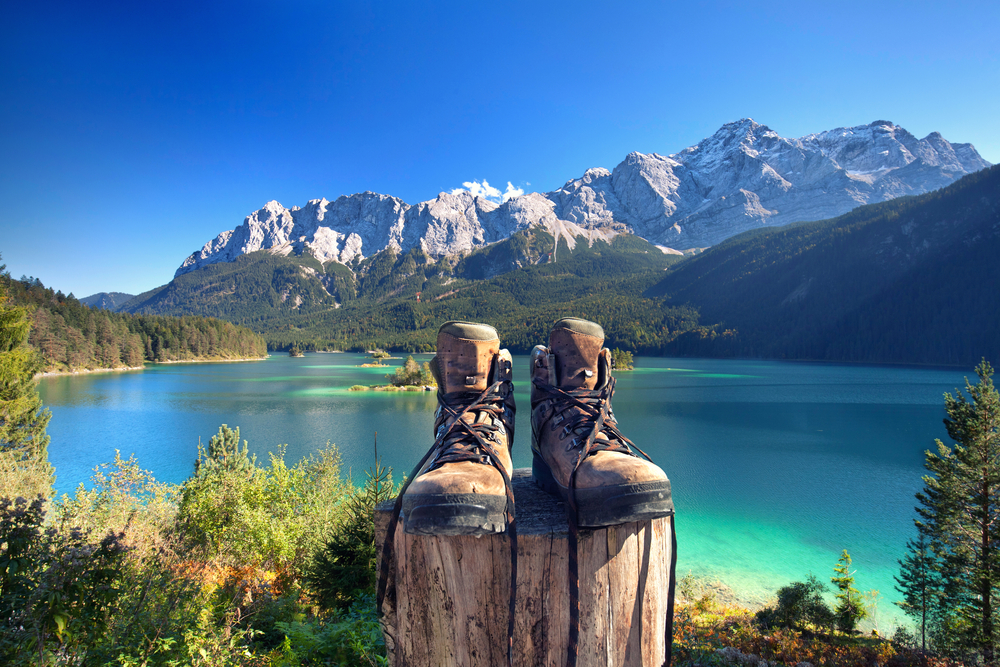Germany has numerous beautiful hiking regions to offer. Often these are low mountain ranges such as the Swabian Alb and the Harz Mountains, but also the high mountains of the Alps and the lake and coastal landscapes in northern Germany attract many hikers and nature lovers. In the following, a selection of ten popular hiking areas in Germany is presented for an initial overview. The journey begins in the Alps and ends at the North Sea and Baltic Sea.
Karwendel Mountains in the Bavarian Alps
The Karwendel Mountains are already located on the border with neighbouring Austria . The flora and fauna here is unique in the midst of wildly romantic mountain scenery and deeply cut valleys. Chamois and ibex are at home here, as are the rare bearded vultures and golden eagles. In addition, magnificent alpine pastures and clear mountain lakes characterize this mountain landscape. An extensive network of signposted hiking trails opens up this diverse region. From the peaks of the mountains, breathtaking views of the mountains of the Bavarian Alps open up. The upper reaches of the Isar in a wide riverbed that always opens up new perspectives also provide unforgettable photo opportunities. As soon as summer is over, the first snow is already on the mountains.
Black Forest
The Black Forest is one of the best-known hiking regions in southern Germany. Nature and culture enter into a fruitful combination here. Fairytale spruce forests, wildly romantic valleys and picturesque villages make the Black Forest so popular. Culture carriers such as the cuckoo clocks, the delicious Black Forest cake and the Bollenhut are known all over the world. A network of hiking trails with a total length of 24,000 kilometers opens up the Black Forest in its entire extent.
Swabian Alb

Steep rock faces and wide plateaus characterise the face of the Swabian Alb. Hikers and active athletes alike will find ideal conditions for extended tours here. There are numerous caves in the karstified underground, including the Bear Cave and the Fog Cave, which exude a magical atmosphere with their many stalagmites and stalactites. Other landmarks include Lichtenstein Castle and Hohenzollern Castle, which floats above the surrounding landscape. In the east of the region, some of the most important and oldest figures in the world were discovered in the Hohler Fels. Geologically, the Swabian Alb has a large number of rock layers, with the Jurassic being decisive.
Palatinate Forest
The Palatinate Forest is the largest contiguous forest area in Germany . You should be careful not to penetrate too deep into the thicket so as not to get lost. Bizarre rock formations made of red sandstone characterize the Dahner Felsenland around the village of the same name with the striking Devil’s Table. You will also find many romantic castles such as Hambach Castle. Since the castles are mostly located on mountain tops, you can also enjoy fantastic views of the wooded surroundings from them. Pretty river valleys alternate with ponds, swamps and moors.
Thuringian Slate Mountains
On both sides of the Saale stretches the Thuringian Slate Mountains. One of the most popular hiking trails is the Rennsteig. In the middle of it are several dams that delight anglers and hikers alike. In the dense forests of the Thuringian Slate Mountains, clear mountain streams ripple and even carp and otters feel at home. In winter, it is wonderful to ski and cross-country ski here.
Elbe Sandstone Mountains
Bizarre rock formations determine the image of the Elbe Sandstone Mountains between Dresden and the Czech border. Even artists such as Caspar David Friedrich were inspired by the unique landscape. Hikers and climbers alike can expect many opportunities to spend a varied day here. Especially from the Bastion, the view sweeps far over the impressive valley of the Elbe. If you are looking for a change from the diverse nature experiences, you will find a top-class cultural programme and world-class art treasures in the Saxon capital Dresden , such as the Blue Vault and the rebuilt Frauenkirche.
Resin
The Harz Mountains are home to the highest mountain in northern Germany, the Brocken. The legendary landscape exudes a magical atmosphere and when the mountain is hit by storms and snow paths, you truly believe that witches are at home here. Culturally, the Harz also has a lot to reveal, be it the old imperial palace in Goslar or the old towns of Wernigerode and Quedlinburg. Railway enthusiasts take a ride on the lovingly maintained narrow-gauge railway. Wild plateaus, rough rocky peaks and dreamy river valleys surprise visitors again and again during a visit to the Harz Mountains.
Lüneburg Heath

One of the largest contiguous heath areas in Europe spreads south of Hamburg . The appearance at the heather blossom in August is particularly atmospheric. But even in winter it is well worth a stay. In any case, a ride in a horse-drawn carriage through this captivating cultural landscape should be on the program. In between, there are scattered idyllic villages with many thatched houses. On an adventurous treetop walk, the wildlife park in the Lüneburg Heath can even be seen from above.
Mecklenburg Lake Districts

An extensive network of lakes and waterways forms the Mecklenburg Lake District. Nature lovers can explore the amphibious landscape by canoe or houseboat. The largest lake is the Müritz, on the banks of which the picturesque small town of Waren nestles. Along the Seven Lakes Trail, guests can discover the diverse landscape from its most beautiful side. White-tailed eagles and cranes often circle in the air, but the gently undulating, water-rich region also functions as an important retreat for many other endangered animal species such as otters and beavers.
Coasts on the North Sea and Baltic Sea
While the Wadden Sea and the tides are the most prominent attractions of the German North Sea coast, things are a little quieter on the Baltic Sea. The coast of the Baltic Sea is characterized by Bodden and long spits, supplemented by large islands such as Rügen or Usedom with long beaches. On the North Sea coast, on the other hand, storm surges often prevail and the fight of the people against the forces of the sea still shapes the people today. The most popular and prominent North Sea island is Sylt, while on the Baltic Sea Rügen attracts countless visitors with its chalk cliffs. All German islands in the North Sea and Baltic Sea promise wonderful hiking experiences between the beach, dunes and the sound of the waves.


